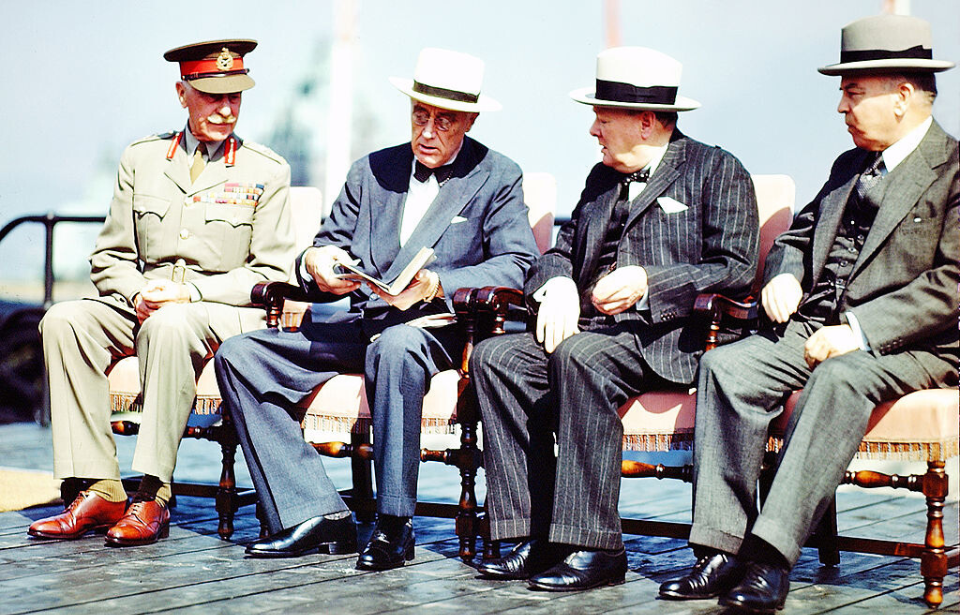Henry Morgenthau Jr.
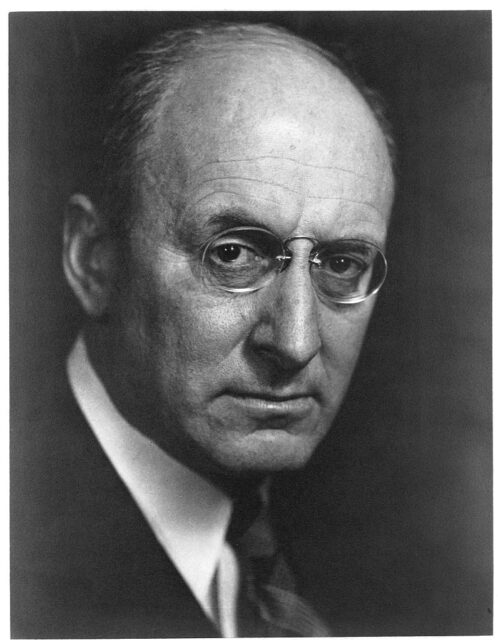
The plan was the brainchild of Henry Morgenthau Jr., who acted as secretary of the treasury during Franklin D. Roosevelt‘s presidency from 1934-onward. He was appointed because he was known to be strict with government spending.
When the Second World War began, Morgenthau became more heavily involved in areas of the administration that weren’t explicitly financial. Of Jewish descent, he consistently tried to push Roosevelt to aid in rescuing his people from German persecution. He was also heavily involved in the Lend-Lease agreements between the United States and other countries.
In 1944, Morgenthau branched out into foreign policy, and it was during this time that he came up with his solution for what the post-war world should look like. He explained, “I appreciate the fact that this isn’t my responsibility, but I’m doing this as an American citizen, and I’m going to continue to do so, and I’m going to stick my nose into it until I know it is all right.”
He added, “I want to make Germany so impotent that she cannot forge the tool of war – another world war.”
Morgenthau Plan

The Morgenthau Plan was outlined in a document titled Suggested Post-Surrender Program for Germany and centered around three main clauses. First, it called for the complete demilitarization of Germany. This involved disarming the population and eliminating any industrial capacity that could aid future military efforts. These measures were to begin immediately following Germany’s surrender.
Partition of Germany
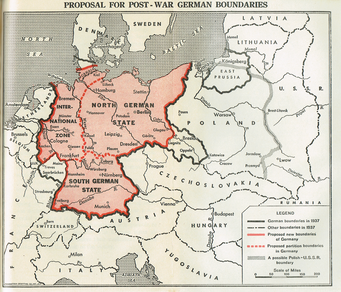
Instead of demanding reparations, similar to the Treaty of Versailles after the First World War, the Allies would receive financial compensation through their control of the region and by taking over the factories and materials previously used there.
The administration of German territory wouldn’t stop there:
- France would gain control of the Saar and regions near the Moselle and Rhine.
- Poland would acquire parts of East Prussia and southern Silesia.
- Austria would revert to its pre-1938 borders.
Germany would be split into two distinct states: South Germany, consisting of Württemberg, Baden, and Bavaria, and North Germany, made up of Saxony, Thuringia, and Prussia.
Cordell Hull developed a second plan
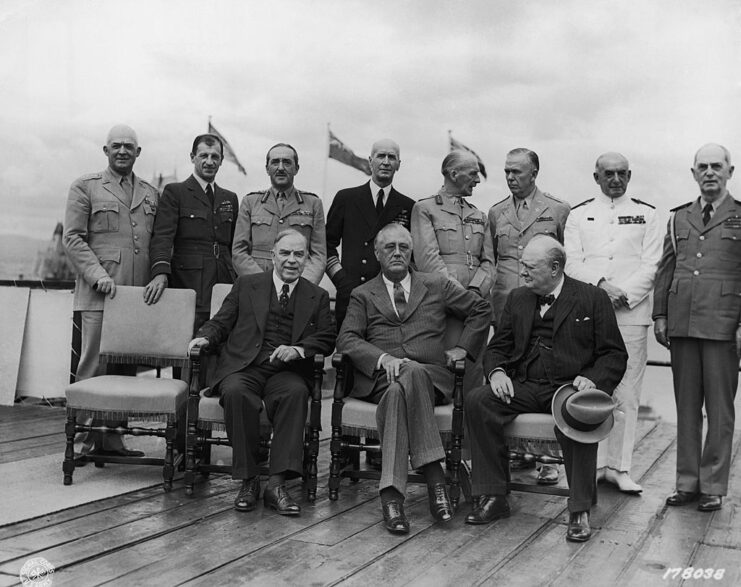
Morgenthau’s plan was based on his desire to see Germany turned into a farming nation. Without modern technology or industrial materials, the country would never be able to start another war or threaten Europe again.
However, this wasn’t the only plan under consideration. Secretary of State Cordell Hull, who was originally assigned the task, had his own approach. While Morgenthau wanted to weaken Germany permanently, Hull believed the country should be rebuilt quickly.
Both plans were presented to President Roosevelt. In a letter to Queen Wilhelmina of the Netherlands, he explained, “There are two schools of thought – those who would be altruistic in regard to the Germans, hoping by loving kindness to make them Christians again, and those who would adopt a much tougher attitude. Most decidedly, I belong to the latter school, for though I am not bloodthirsty, I want the Germans to know that this time at least, they have definitely lost the war.”
The Morgenthau Plan and German propaganda
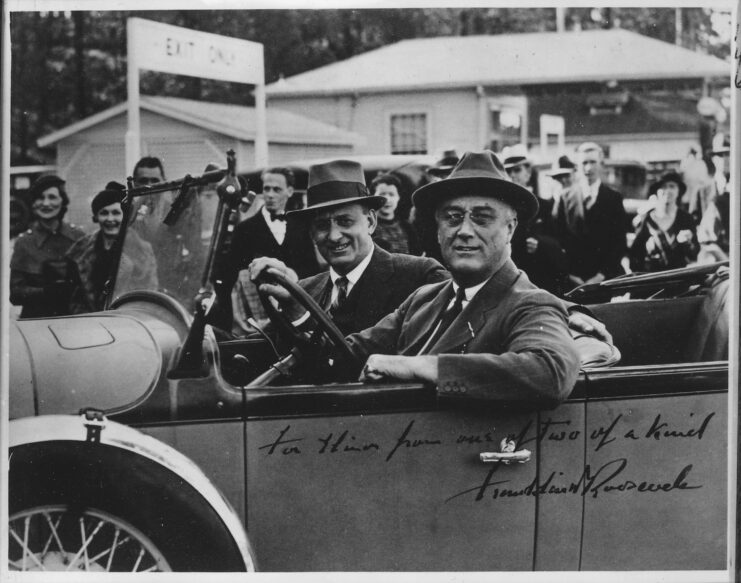
At the Second Quebec Conference in 1944, President Franklin D. Roosevelt strongly advocated for the Morgenthau Plan before the Allied leadership. While Winston Churchill initially resisted, British support grew once the United States offered a substantial Lend-Lease package to ease the UK’s wartime burdens.
Not long after, the plan’s existence became public. On September 21, 1944, The New York Times reported on the plan, and the news quickly reverberated.
The Nazi propaganda machine wasted no time exploiting the revelation. German officials twisted the plan into a tool of psychological warfare, spreading fear among their armed forces and civilian population. They leaned heavily on Henry Morgenthau Jr.’s Jewish background, framing the proposal as evidence of a supposed Jewish conspiracy against Germany. This rhetoric fed into long-standing antisemitic lies and was used by the regime to further rationalize its escalating violence against Jewish communities.
Marshall Plan
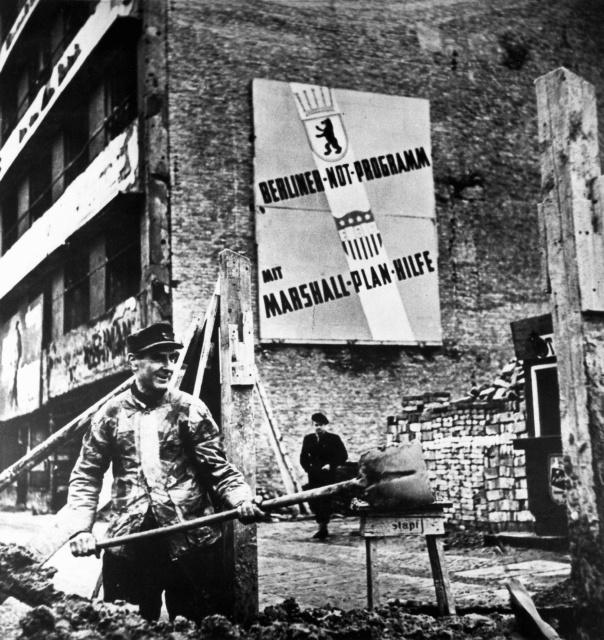
When Roosevelt passed away in April 1945, the Morgenthau Plan’s fate was sealed as well. For a short time, it appeared that President Harry Truman might pursue the plan, evidenced by his signing of Directive 1067 on May 10, 1945. This directive instructed that the U.S. would “take no steps looking towards the economic rehabilitation of Germany [or] designed to maintain or strengthen the German economy.”
However, this stance was quickly reversed. In July of the same year, Truman signed Directive 1779, which aimed to provide economic aid to Germany instead. That month, Morgenthau was forced to resign from the Treasury, largely due to irreconcilable differences with Truman over political strategy. In hindsight, this may have been for the best—studies suggest that if the Morgenthau Plan had been fully implemented, nearly 25 million Germans could have faced starvation.
More from us: These ‘Night Witches’ Weren’t Burned At the Stake – They Bombed German Soldiers
The strategy adopted after World War II was almost the exact opposite of what the Morgenthau Plan had envisioned. Rather than reducing Germany to an agrarian society stripped of advanced technology, the focus shifted toward providing substantial economic assistance to help the country stabilize and recover from the devastation of war.
Known as the Marshall Plan, this initiative proved highly effective, enabling Germany to rebuild its economy and infrastructure in ways that were never allowed following the First World War.
